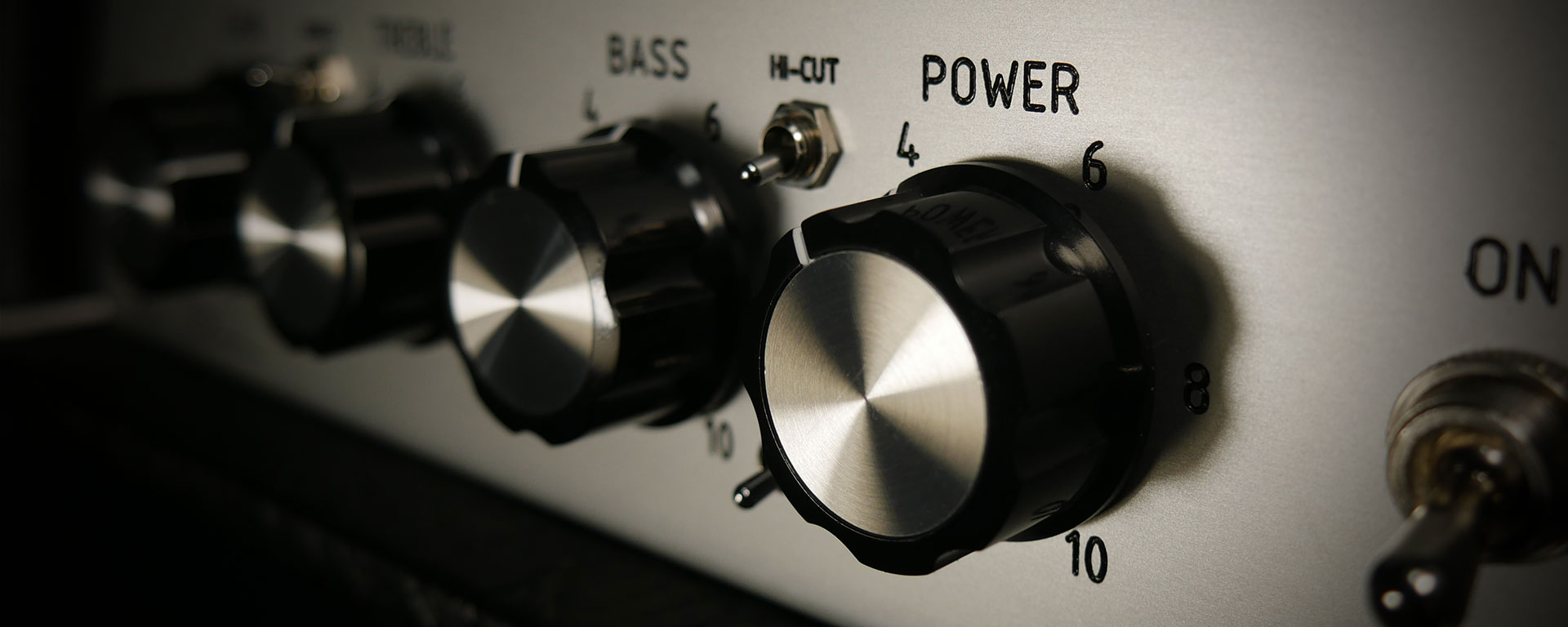
POWER SCALING
The ultimate power reduction technology available today.
Nothing sounds better than a cranked tube amp, but who can actually play that loud? Rock guitarists have always been facing the problem of not being able to easily reach the sweet spot of their amps in every sound contest. Absorbing the extra power with a passive power attenuator connected in between the amp and the speaker has been a way to go, but not without some usability limitations and tone result compromises.
Today, thanks to Power Scaling technology, it is possible to obtain real power tubes saturation at any volume, in a much smarter and performing way. In fact, contrary to passive power attenuators, PS technology produces no more than the necessary power needed to play, thus prolonging tubes life every time that full power is not needed. Ultra-transparent tone operation is guaranteed by the fact that the complex interaction between the power amp and the speaker is not altered in any way. Last but not least, attenuation is performed continuously (without steps) from max power down to 0, always providing the perfect power level for the given playing contest.
HOW IT WORKS
In a traditional amplifier, tubes are generally operated at their maximum anodic voltage, but nothing prevents to operate them at a lower voltage to reduce their power capability. By acting as a voltage regulator for the power amp stage, PS does exactly this. Because to maintain proper tube operation (and tone) more than one electrical parameter must be scaled at the same time, the name 'Power Scaling' has been chosen.
PREAMP VS POWER AMP DISTORTION
In the early days of electric guitars, amplifiers were not designed for distorted use, but soon players found out that by pushing the volume knob past a certain point something magic and inspiring happened... To make a long story short, most of our favorite r'n'r tones found in countless classic recordings have been captured this way. Once again, the main limitation with this approach was that by doing so, there was no control over the amplifier loudness.
The answer to this problem came about in the mid-70s when commercial amp manufacturers started to add a master-volume in between the preamp and the power-amp and to cascade multiple gain stages together. By doing so, the preamp was now responsible for the distorted sound and the power-amp task was limited to cleanly amplify it to the desired listening level.
This technical solution (still in use today) worked well for the purpose, but also led to a somewhat different tone result.
In fact, preamp distortion sounds by its nature colder (thinner) compared to power-amp distortion, since it misses the character of the power-amp and it is usually best suited for mid-to-high gain tones, rather than for classic blues and rock applications.
On the other side, Power-amp distortion offers a warmer tone and a greater dynamic range to play with, providing the player with the ability to control all the nuances, from clean to overdrive, with the simple touch of the right hand and the volume of the guitar.
Even preamp distortion based devices (both preamps and stompboxes) usually gain more personality when paired up with ‘a touch’ of power-amp distortion.
Finally, thanks to PS technology it is now possible to achieve that authentic vintage tone at any given volume, in every sound contest.
Notes
Not to be confused with other power reduction methodologies (like pentode/triode, full power/half power, class AB/A switches and similar), Power Scaling is the most advanced and performant power reduction technology available today on the market.
Power Scaling is a trademark of London Power.
